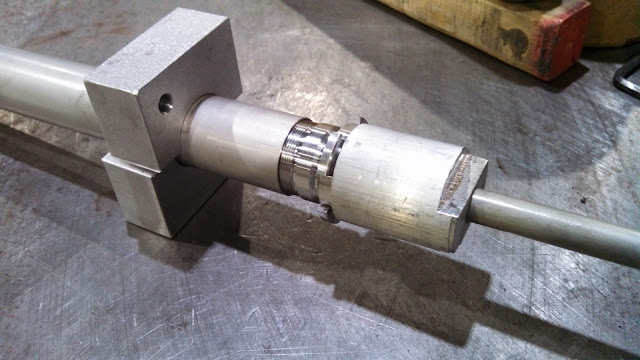Kyle Tarry
Husqvarna
Pro Class
Hey guys, just wanted to check in and make sure I am going about this right before I screw something up...
I am trying to unscrew the top of the cartridge in my WR's KYB OC forks, so I can get to the midvalve. See picture below:

Since KYB put the bottom-out dealie (left side) on with a crimp, there's no getting that off (thanks, KYB!). Am I correct in stating that the "cap" (the shiny billet machined part on the top/left of the cartridge tube) will unscrew from the rest of the tube?
If so, I am going to make a clamp to hold the tube, and another special tool to engage with the four "slots" on the spring seat with a hex or some wrench flats on it.
I made a quick attempt at it in the garage by just sticking a 1/4 inch rod through the holes at the bottom of the cartridge, and grabbing the "cap" with pliers; apparently that thing is on there TIGHT, I bent the rod and nothing moved on the cap.
No evidence of peening on these parts, so that's good. I suspect there is loctite? I applied a little bit of heat but I don't want to damage anything in the tube...
I am trying to unscrew the top of the cartridge in my WR's KYB OC forks, so I can get to the midvalve. See picture below:

Since KYB put the bottom-out dealie (left side) on with a crimp, there's no getting that off (thanks, KYB!). Am I correct in stating that the "cap" (the shiny billet machined part on the top/left of the cartridge tube) will unscrew from the rest of the tube?
If so, I am going to make a clamp to hold the tube, and another special tool to engage with the four "slots" on the spring seat with a hex or some wrench flats on it.
I made a quick attempt at it in the garage by just sticking a 1/4 inch rod through the holes at the bottom of the cartridge, and grabbing the "cap" with pliers; apparently that thing is on there TIGHT, I bent the rod and nothing moved on the cap.
No evidence of peening on these parts, so that's good. I suspect there is loctite? I applied a little bit of heat but I don't want to damage anything in the tube...



 Oh well! I will update soon enough!
Oh well! I will update soon enough!
